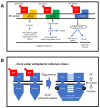Endocrine-Disrupting Chemicals and Their Adverse Effects on the Endoplasmic Reticulum
- PMID: 35163501
- PMCID: PMC8836273
- DOI: 10.3390/ijms23031581
Endocrine-Disrupting Chemicals and Their Adverse Effects on the Endoplasmic Reticulum
Abstract
There is growing concern regarding the health and safety issues of endocrine-disrupting chemicals (EDCs). Long-term exposure to EDCs has serious adverse health effects through both hormone-direct and hormone-indirect ways. Accordingly, some EDCs can be a pathogen and an inducer to the susceptibility of disease, even if they have a very low affinity on the estrogen receptor, or no estrogenic effect. Endoplasmic reticulum (ER) stress recently attracted attention in this research area. Because ER and ER stress could be key regulators of the EDC's adverse effects, such as the malfunction of the organ, as well as the death, apoptosis, and proliferation of a cell. In this review, we focused on finding evidence which shows that EDCs could be a trigger for ER stress and provide specific examples of EDCs, which are known to cause ER stress currently.
Keywords: endocrine system; endocrine-disrupting chemical; endoplasmic reticulum; unfolded protein response.
Conflict of interest statement
The authors declare no financial interests.
Figures

References
-
- Colborn T., Clement C. Chemically Induced Alterations in Sexual, Functional Development: The Wildlife/Human Connection. Princeton Scientific Publishing Princeton; Princeton, NJ, USA: 1992. Wingspread consensus statement.
Publication types
MeSH terms
Substances
Grants and funding
LinkOut - more resources
Full Text Sources

